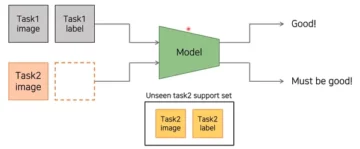This article was published as a part of the Data Science Blogathon
Introduction
Hey all,
I am sure you must have played pokemon games at some point in time and must have hated the issue of creating an optimal and balanced team to gain an advantage. What if I say one can do this by having some knowledge of python, data science, and python. Pretty interesting, right?
This article is a walkthrough to perform just that using PuLp, the linear programming and optimization library.
Here is a quick summary of the gameplay, which will be helpful later on.
A Quick Refresher
(You may skip if already known :)
This section is optional and contains a summary of game mechanics in a few points:
1. Pokemon are animal-like creatures that are obtainable by battling them. Each one has its primary Type and weakness or advantage over the others. They can also undergo a genetic transformation two times called evolution. (later has mega-evolution!)
2. Evolution allows an increase in overall strengths, changes in forms, and even provides additional typings.
3. The game mechanics also allow for powerful pokemon(legendaries) caught at the end of the game and give upper advantages to the yielder.
For gameplay:
1. One starts as a lead character who can choose their first pokemon called stater pokemon out of 3.
2. Having chosen, they embark on a journey to defeat eight gym leaders, specializing in a specific type, to enter a Pokemon league tournament.
3. Once entered, they are required to defeat four powerful trainers and the champion(uses a variety of different pokemon types)
Finally, this clarifies our goal: Can we create a helpful team in fighting these 12 trainers and probably the last one?.
Dataset
For the Problem in hand, we will be using two datasets:
Pokemon dataset from Kaggle: For pokemon names and stats.
Type_chart: For type matchups and effects.
It will be great to download both datasets(pokemon.csv & Pokemon Type Chart.csv), save them in a separate folder(datasets), and follow along.
Loading the Dataset
We start by loading the CSV file using pandas and printing a few results:
import numpy as np import pandas as pd
team_df = pd.read_csv("Datasets/pokemon.csv") team_df.head()
Output:

pokemon-dataset – Image by Author
The dataset consists of 721 pokemon, including their id, name, generation, stats, legendary and original stats breakdown. Table 1.1 shows the details:

Note: We will use pokemon data until generation 4 and remove legendaries and mega evolved to get a fair dataset.
Changing column names
Now, for understanding purposes, let’s change the name of # to id :
team_df = team_df.rename(columns= {"#" : "id"})
team_df.head()
Output:

Filtering the Pokemons
Since the dataset consists of extra pokemons, filter the dataset to only include pokemons up to required, achieved by filtering over the “id” column. However, one needs to store all the indices first; gen 4 is easy, but for gen1-3, only was is to hold the index manually:

The image shows the code which keeps the index of 110 pokemons quickly verifiable using:
# checking len len(gen1_gen3)
>> 110
By performing filtering operation on Pokedex results in desires dataset
# creating pokedex pokedex = gen4+gen1_gen3 # filtering out the dataset based on pokedex till gen 4 gen4_dex = team_df[team_df.id.isin(pokedex)] gen4_dex
Output:

Notice how the no of rows decreased from 721 to 243; this represents the filtering was successful.
Expelling duplicate & legendaries
A careful evaluation of the above image reveals the same names for some pokemon(Shaymin). As our constraint is not to use those, we will drop them using their id’s
# removing dupilacates like id -550,551 - Shaymin forms gen4_dex= gen4_dex.drop_duplicates(subset = ['id'])
Legendaries – “represented using True/ False,” so the filtering becomes easy.
# removing Legendary pokemon for fairness - just filtering non legendaries gen4_dex = gen4_dex[gen4_dex.Legendary == False] gen4_dex

Output: The result is a dataset with all filtering performed.
Loading Type Chart
As our data is now ready for analysis, we now need to load the type chart which will help us in creating a matrix:
# loading dataset- type_chart
type_chart = pd.read_csv("Datasets/pkmn_type_chart.csv" , index_col=[0])
Here index_col =[0] is because we don’t want to include our 1st column( numbers)
Output:

The numeric values in the dataset are just quantification of how each move affects the other. For easy understanding. I have summarized the dataset below:

Selecting Pokemon Types Based On Gym Leaders And Elite Fours
The idea of using a type chart was to track which pokemon type has an advantage over gym leaders and elite four’s, i.e. 12 types. We can achieve this by filtering our dataset over the types used by the leaders and elites.
# storing types for reference pkmn_types = ['Rock', 'Grass', 'Fighting', 'Water', 'Ghost', 'Steel', 'Ice', 'Electric', 'Bug', 'Ground', 'Fire', 'Psychic'] # filtering gym_elite_four = type_chart[[c for c in type_chart.columns if c in pkmn_types]] gym_elite_four
Output:

Removal of fairy type confirms the filtering executed favourably.
Objective Function
Recall the objective – We need a set of 6 pokemon that are super effective against at least one of the gym and elite fours, with the constraints :
1. No legendaries, mythical or mega evolution [C, S] allowed (gen 4 – has no mega evolution)
2. The team has at least one starter pokemon[S] + their evolutions (optional).
With the rules defined, we can refer to the above as an LPP, and the goal is to optimize the below function:

Under the imposed restrictions:
Images By Author
Where :

Creating Binary Matrix Aij
According to the equation, we must store all the variable values; achieved by iterating through all the required columns.
# changing Types 1 to Type to insure no error #while iterating using pandas
gen4_dex = gen4_dex.rename(columns= {"Type 1" : "Type1"})
gen4_dex = gen4_dex.rename(columns= {"Type 2" : "Type2"})
# creating list ids = [] # contains the id of each pokemon names = [] # list containg all the pokemon names total_stats = [] # total stats/ total column of pokemon dataset effective_type =[] # store pokemon type which are effective agaist the opponents pokemon # iterating through entire data to store different variables i = 0 # counter/ iterator for row in gen4_dex.itertuples(index=True, name='Pandas'): ids.append(row.id) names.append(row.Name) # Check what types the Pokemon is strong against effective_type.append([1 if s >= 2.0 else 0 for s in list(gym_elite_four.loc[row.Type1])]) total_stats.append(row.Total) # Accounting for any secondary typings, and adding onto any advantages conferred try: effective_type[i] = list(np.add(strengths[i], [1 if s >= 2.0 else 0 for s in list(gym_elite_four.loc[row.Type2])])) except: KeyError i += 1 # Equals 1 if the Pokemon is strong against the type indicated; 0 otherwise #--> 206 by 18 matrix # Aij advantage = [[1 if r >= 1 else 0 for r in effective_type[i]] for i in range(206)] # Create the set of starter Pokemon starterNames = ['Turtwig', 'Grotle', 'Torterra', 'Chimchar', 'Monferno', 'Infernape', 'Piplup', 'Prinplup', 'Empoleon'] starter_idx = [] for pkmn in starterNames: starter_idx.append(names.index(pkmn)) # creating mythyical indices list to later include the constraints mythical_names = ['Cresselia', 'Manaphy'] # list of names # using names to find the index of pokemon and adding mythical index mythical_idx = [] for i in mythical_names: mythical_idx.append(names.index(i))
The above code is self-explanatory and requires a bit of intermediate python knowledge. The different variable represents the equation , e.g staterName – S in eq
The Final Piece – Using the PuLp Library
Now that w
Usage of PuLp Library
Plup library utilizes classes and their associated functions to carry out the optimization. So let’s understand them first:
LpProblem – Base Class for Linear Problem – Problem Initialization
# start a linear problem P = LpProblem("name",objective) # LpMaximize/LpMinimize
LpVariable – Class to Store added variables – Add Variables
# adding variable # start , end : 1,5 i.e 1<=var<=5
var = LpVariable("var_name", start, end)
IpSum – function to create a linear expression; can be used as constraint or variable later on
#expression of form var1*var2+c exp = lpSum([var1*var2+c])
#returns : [a1*x1, a2x2, …, anxn]
solve: solves the Problem:
P.solve()
For more info on the library, refer to the original documentation. I have only included those that we will be using.
With this, we can now proceed to our final code.
The Code
Install Pulp:
!pip install pulp
# import everthying from plup from pulp import * # define model name and objective end goal - max/min best_team = LpProblem("optimal_team", LpMaximize) # defining a sparce matrix for pokemon i.e mask with 0 & 1s which will be later populated Pokemon = LpVariable.dicts("Pokemon", range(206), cat=LpBinary) # 206 pokemon to consider - Binary - O,1 # defining the objective fn to maximize - defined earlier # TiPi - # pkmn is the iterator variable used best_team += lpSum([total_stats[pkmn] * Pokemon[pkmn] for pkmn in range(206)]) # adding contraint that we need only 6 pokemon on team(pi = 6) best_team += lpSum([Pokemon[pkmn] for pkmn in range(206)]) == 6 # adding 2nd constraint that out team should have one starter pokemon(S) best_team += lpSum([Pokemon[pkmn] for pkmn in starter_idx]) == 1 # adding contraints that we can't use mythical pokemon(C,M) best_team += lpSum([Pokemon[pkmn] for pkmn in mythical_idx]) == 0 # adding contraint that team should have #atleast one pokemon which has type advantage against #one of the Gym leader/Elite Four for i in range(12): best_team += lpSum([advantage[pkmn][i] * Pokemon[pkmn] for pkmn in range(206)]) >=1 # finding the soltution best_team.solve()
>> 1
6 Names can be checked by iterating through the mask model(Pokemon):
# printing out results - > Best 6 pokemons for i in range(206): if Pokemon[i].value() == 1: print(names[i])
Output:

As can be seen, we have all the six pokemon where infernape is the final form of chimchar (fire type starter ), and at least one is super effective against each gym and elite. For, E.g. Togekiss – Fairy Type has a super advantage over dragon types.
Conclusion
The implication of the code is extensive, and we have barely scratched the surface. The following article covers how to build your team around your stater and must include the desired pokemon.
I hope you had fun reading and implementing. If you got stuck or have opinions to share, kindly comment below or contact me on my contact pages.
References
Learn Pulp: Toward Data Science Blog
Contact: LinkedIn | Twitter | Github
Code Files: Github
Inspiration: Code Basics, Jamshaid Shahir
The media shown in this article is not owned by Analytics Vidhya and are used at the Author’s discretion
Related
- "
- &
- 7
- Accounting
- Additional
- ADvantage
- All
- analysis
- analytics
- around
- article
- BEST
- Bit
- Bug
- build
- caught
- change
- checking
- code
- Column
- Creating
- data
- data science
- Dragon
- Drop
- Effective
- Electric
- embark
- evolution
- fair
- Fire
- First
- follow
- form
- fun
- function
- game
- gameplay
- Games
- Ghost
- great
- gym
- hold
- How
- How To
- HTTPS
- ICE
- idea
- image
- Including
- Increase
- index
- info
- Inspiration
- knowledge
- lead
- Library
- List
- load
- mask
- Matrix
- Media
- model
- move
- names
- numbers
- Opinions
- Other
- Others
- pokemon
- Programming
- Python
- Reading
- Results
- rules
- Science
- secondary
- set
- Share
- SIX
- So
- start
- stats
- steel
- store
- successful
- Surface
- time
- tournament
- track
- Transformation
- us
- Water
- WHO
- youtube










